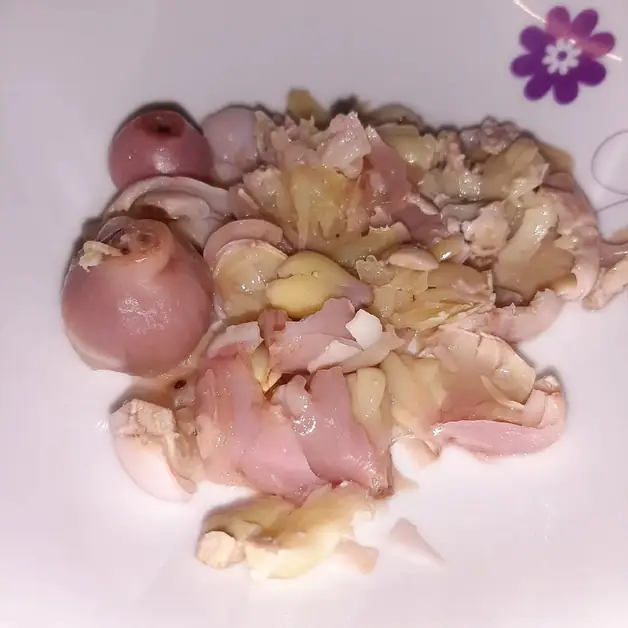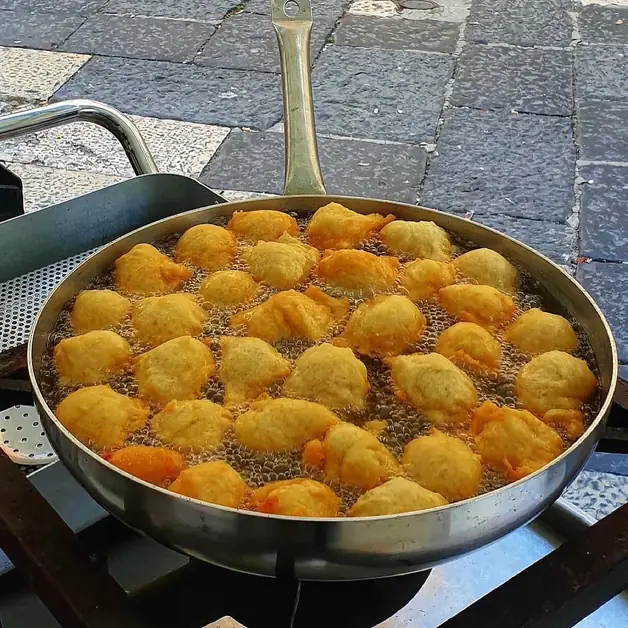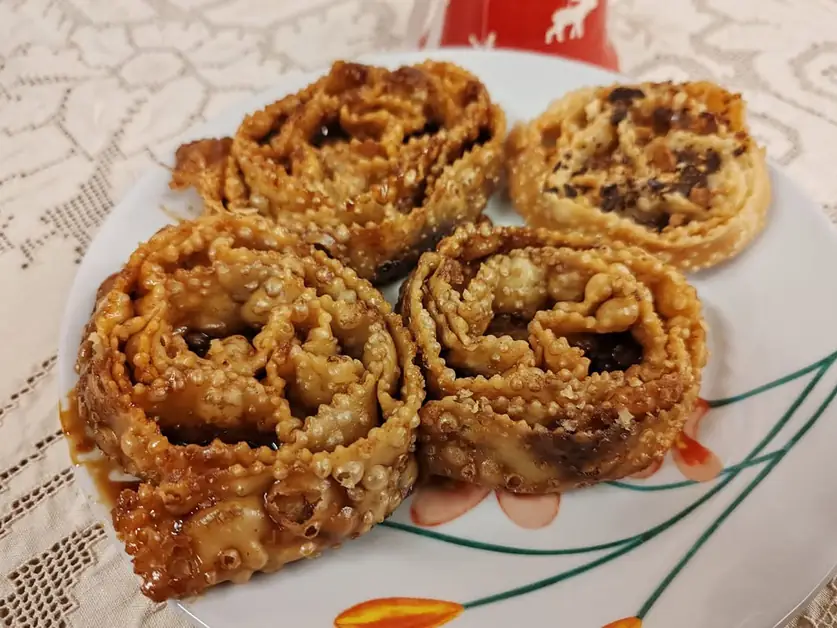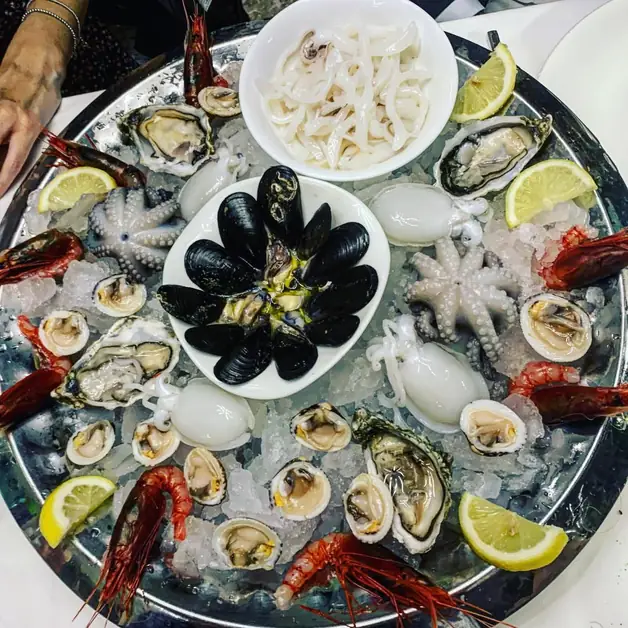Eyes of Santa Lucia the sweet symbol of Puglia Christmas
The Eyes of Santa Lucia are Apulian sweets symbolizing tradition.
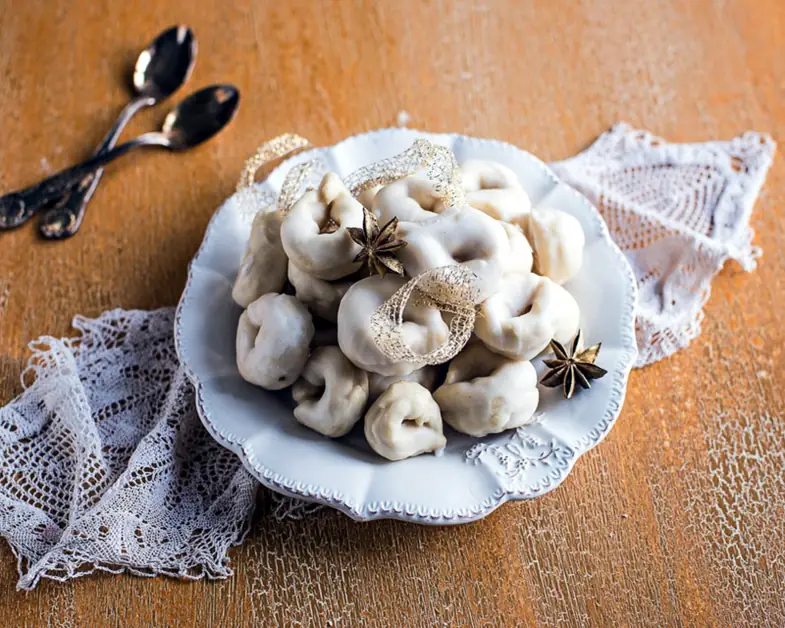
What are the Eyes of Santa Lucia?
The Eyes of Santa Lucia, called in the Bari dialect ècchie de Sanda Lecì, are small sweet taralli covered with a white sugar glaze, prepared mainly during the Christmas holidays. Although less known than cartellate or castagnelle, they are part of the most authentic tradition of Apulian cuisine, particularly in Bari.
These sweets represent the simplicity and sweetness of the Apulian peasant culture: few ingredients, no yeast, and a delicate fragrance that takes you back in time. Their name recalls the devotion to Santa Lucia, the protector of sight, celebrated every year on December 13th.
What are the traditional ingredients of the Eyes of Santa Lucia?
The recipe for the Eyes of Santa Lucia is very simple and requires very few ingredients, all easily available.
For the dough:
1 kg of white flour 200 ml of white wine 200 ml of olive oil
For the glaze:
350 g of powdered sugar 4 tablespoons of water
These ingredients, worked together with patience and precision, give life to a crumbly and slightly fragrant sweet, perfect to enjoy with a glass of sweet wine or coffee.
How to prepare the Eyes of Santa Lucia step by step?
Preparation begins by kneading the flour, oil, and white wine in a bowl. You need to work the dough until you achieve a soft and smooth consistency, easy to shape.
Once ready, thin cords are formed by hand, cutting them into small pieces and closing them in a circle, like mini taralli. It is important that they are small and uniform, so that the cooking is even.
They are then placed on a baking sheet lined with parchment paper and baked at 150°C for about 20 minutes (ventilated oven), until they become golden but not too dark.
How is the glaze for the Eyes of Santa Lucia prepared?
The glaze, called scelèppe in the Bari dialect, is what makes the Eyes of Santa Lucia unmistakable. It is prepared by mixing powdered sugar with warm water in a bowl until a white, shiny cream without lumps is obtained.
When the taralli have cooled, they are completely immersed in the glaze, one by one, so that they are well covered. They are then left to dry on a sheet of parchment paper until the glaze solidifies, creating a crunchy and sweet coating.
Where does the tradition of the Eyes of Santa Lucia come from?
Legend has it that these sweets were born as a tribute to Santa Lucia, the protector of sight, highly venerated in Southern Italy. In the Bari tradition, her feast was celebrated on December 13th with white sweets as a symbol of purity and light.
The Eyes of Santa Lucia thus represent the light that conquers darkness, in a time of year when the days are shorter. For this reason, they were prepared by Apulian families as a sign of hope and faith.
When are the Eyes of Santa Lucia prepared in Puglia?
These sweets are traditionally prepared during the Christmas season, especially in the days leading up to Santa Lucia's feast. However, many Apulian families also make them on other occasions, as they are light, keep well, and pair well with any meal.
They are often prepared in large quantities, stored in tin boxes, and offered to guests during the holidays or given as a sign of affection.
Where can you find the Eyes of Santa Lucia today?
The Eyes of Santa Lucia can still be found today in the artisan pastry shops of Bari and its surroundings, but also in many traditional bakeries that produce typical Apulian sweets. In some Christmas markets, especially those dedicated to local products, it is possible to taste handmade versions made according to the original recipe.
Many agritourisms and farms offer them to tourists during the holiday season, often accompanied by other Apulian sweets such as cartellate, calzoncelli, and castagnelle.
Why are the Eyes of Santa Lucia so special in the Bari tradition?
These sweets are special because they encompass all the meaning of Apulian holidays: simplicity, family, and devotion. Every bite tells a story of tradition, passed down from mother to daughter.
Unlike other richer sweets, the Eyes of Santa Lucia stand out for their lightness and purity. The white glaze that covers them symbolizes light and faith, making them perfect for celebrating the saint who bears her name.
What is the symbolic meaning of the Eyes of Santa Lucia?
According to tradition, these sweets were prepared as a votive offering to ask for Santa Lucia's protection over sight and health. Their simple and white appearance represents the purity and light that the saint gives to the faithful.
In Apulian homes, it was believed that sharing the Eyes of Santa Lucia with family and neighbors would bring luck and serenity throughout the year.
How can the Eyes of Santa Lucia be personalized?
Although the traditional recipe is very essential, there are some modern variations. Some add a pinch of anise or vanilla to the dough to flavor it, while others color the glaze with a few drops of lemon or decorate the sweets with colored confetti.
In some families, the glaze is scented with a bit of Strega liqueur or orange blossom water to make it even more fragrant. However, the classic version remains the most loved, precisely for its simplicity.

